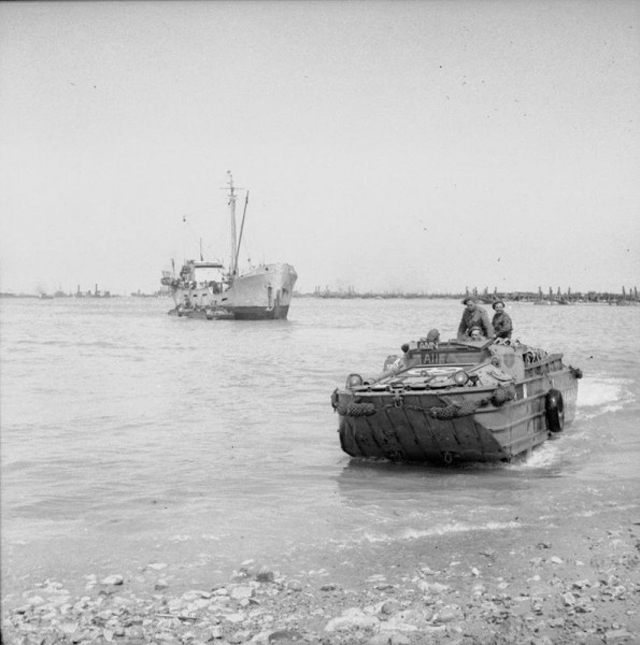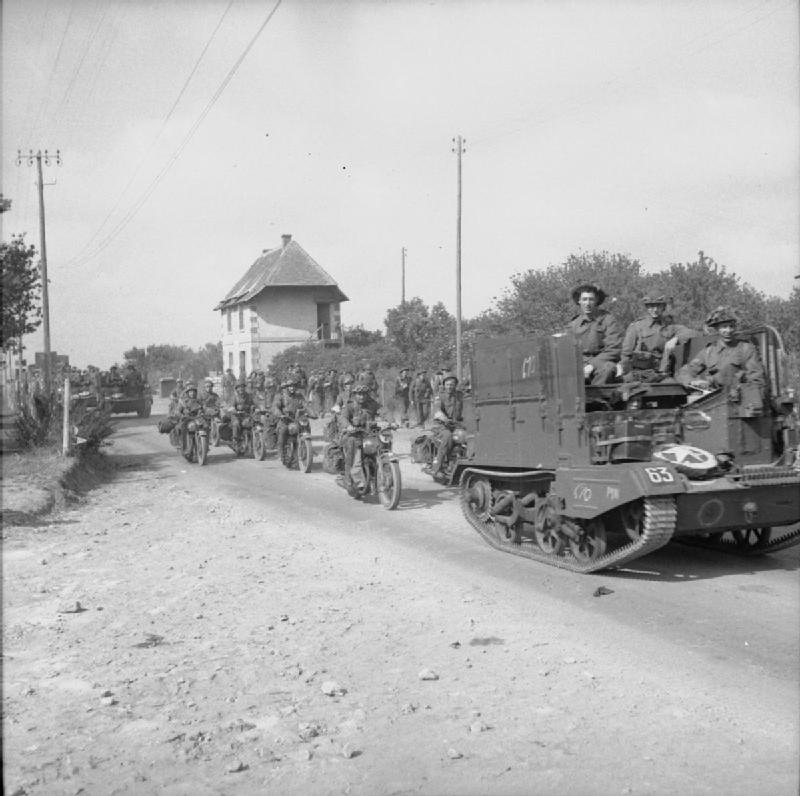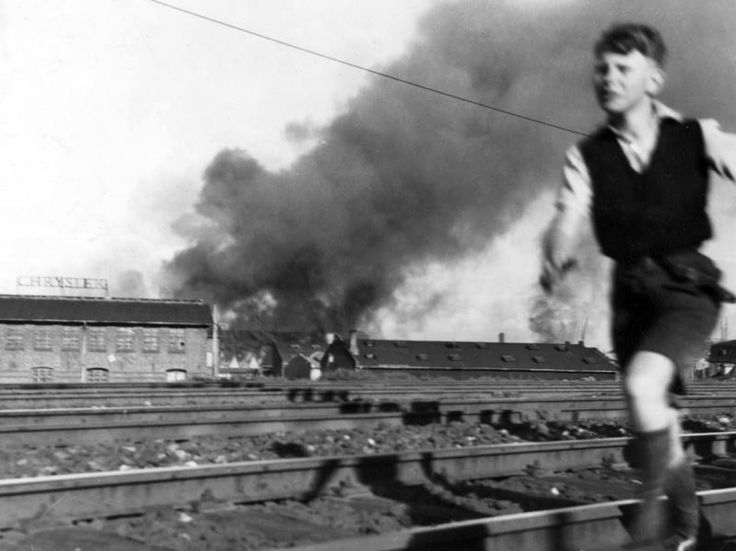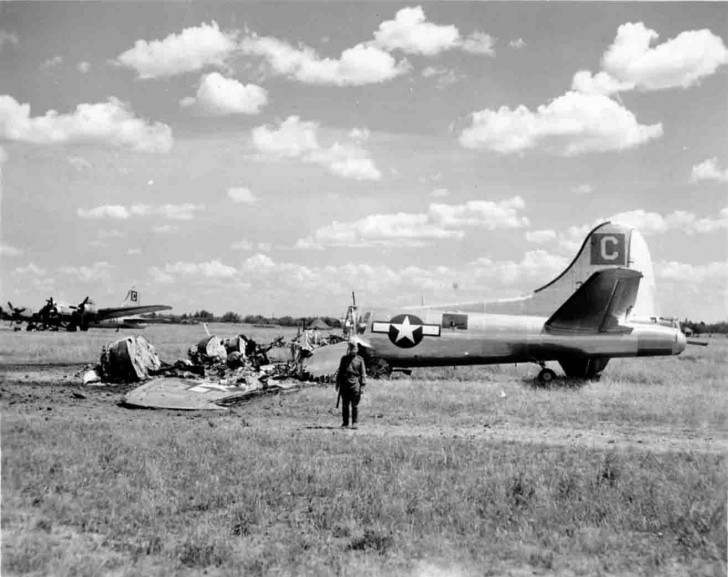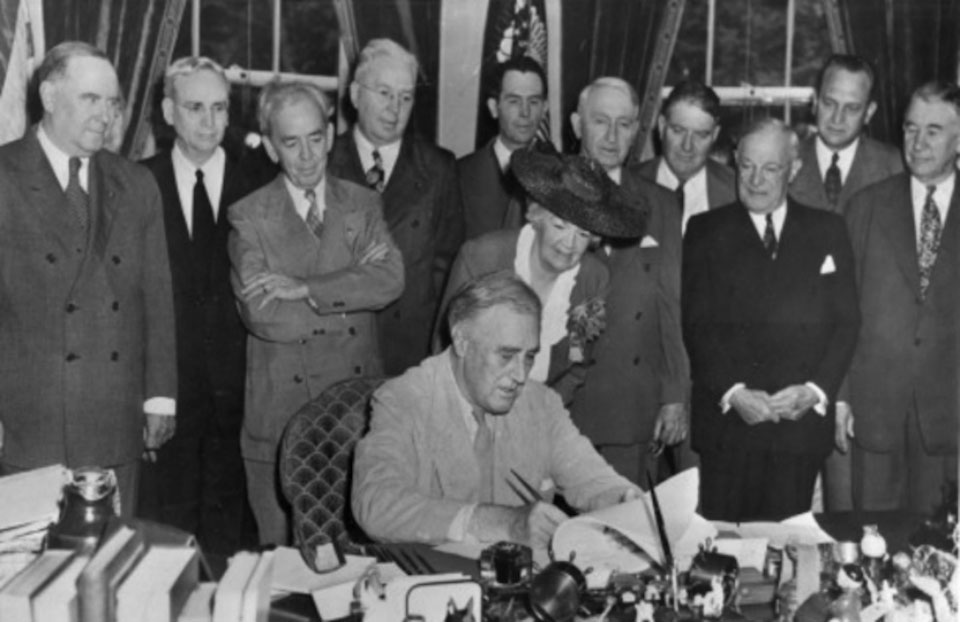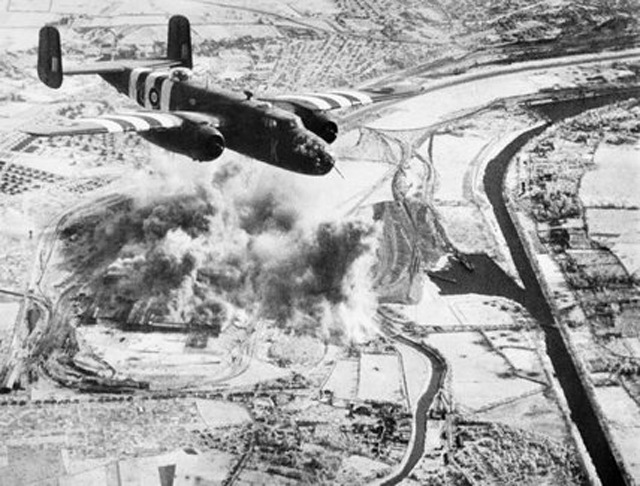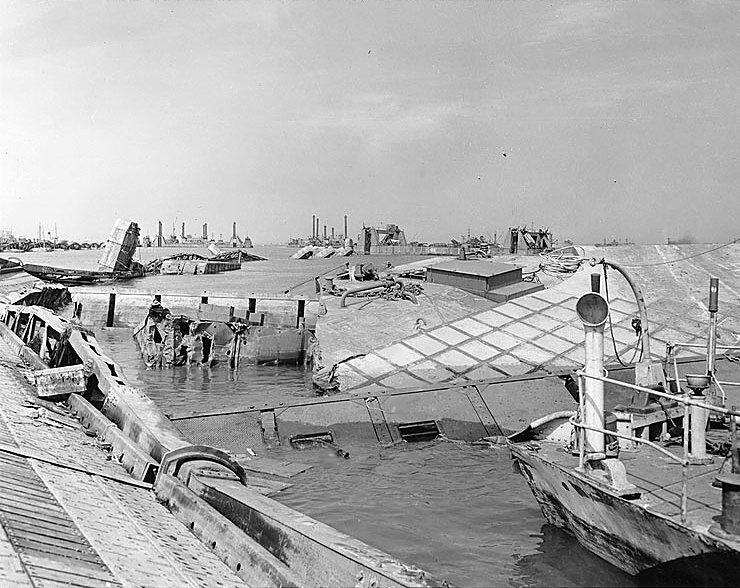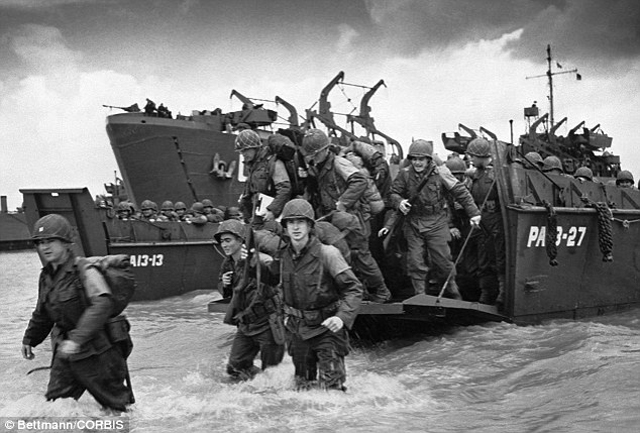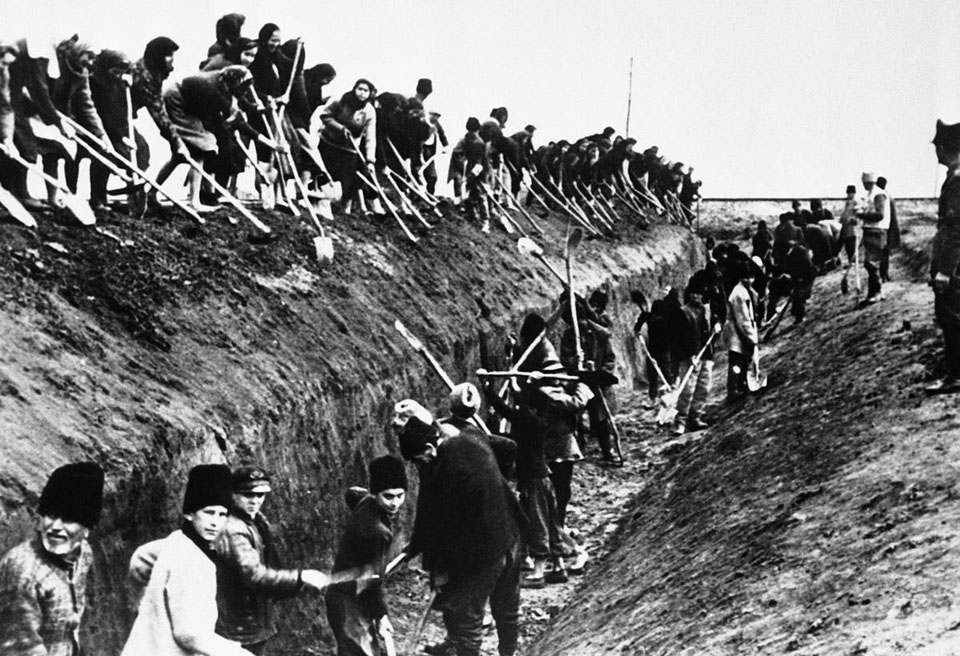Air Operations, Carolines
- XIII Bomber Command B-24s attack the Sorol, Woleai, and Yap atolls.
- VII Bomber Command B-24s attack the Truk Atoll.
Air Operations, CBI
BURMA- 40 10th Air Force fighter-bombers attack Mogaung and Myitkyina.
- 10 fighter-bombers attack Hopin, Namma, and Sahmaw.
- 6 7th Heavy Bomb Group B-24s airlift fuel to Kamaing.
- 13 308th Heavy Bomb Group B-24s attack shipping and port facilities at Bakli, Hainan Island.
- 18 14th Air Force P-40s attack motor vehicles between Hsuchang and Lohochai.
- 4 P-40s attack a troopship on Tungting Lake.
- 40 10 Air Force B-25s airlift ammunition to Imphal.
Air Operations, Europe
The Luftwaffe stages a surprise night raid on the 8th Air Force's 'shuttle bombing' base at Poltava in the Ukraine. 60 planes are involved in the attack which destroys 44 B-17s. 26 men are killed and over 2 million liters of fuel are destroyed. Shuttle raids are subsequently abandoned.
RAF BOMBER COMMANDDaylight Ops:
- 119 Lancasters, 102 Halifaxes and 13 Mosquitos of Nos. 1, 4, 5 and 8 Groups are sent to special V-weapon sites and stores. The sites at Mimoyecques and Siracourt are accurately bombed by No. 1 and 4 Group forces with Pathfinder marking, but the No 617 Squadron force attacking Wizernes fails to find its target because of cloud and returns without dropping its bombs.
- 1 Halifax is lost from the Siracourt raid.
Attack on V-weapons Site |
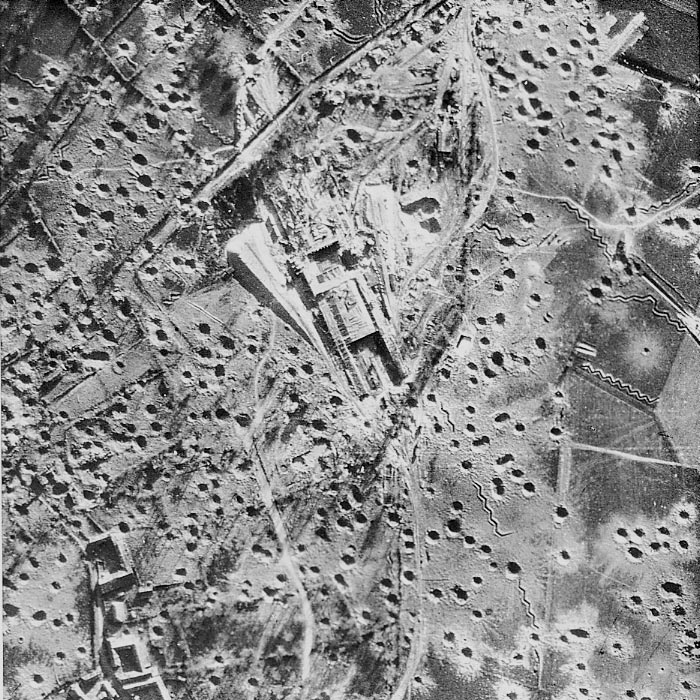 |
- 2 Mosquitos fly uneventrul Ranger patrols.
- 111 Lancasters, 100 Halifaxes and 10 Mosquitos of Nos. 1, 4 and 8 Groups attack railway yards at Laon and Rheims. The bombing at both targets is successful.
- 4 Halifaxes are lost on the Laon raid and 4 Lancasters from the Rheims one.
- 29 Mosquitos are sent to Hamburg, 8 to Rouen, 6 Halifaxes and 4 Stirlings lay mines off French ports, and there are 35 Mosquito patrosl and 15 RCM sorties.
- There are no losses.
FRANCE:
- Mixed formations totaling 217 8th Air Force B-17s and B-24s attack V-weapons sites in the Pas-de-Calais area.
- 1 B-17 is lost
- A small number ot the 165 VIII Fighter Command P-47s and 97 P-51a providing escort for the heavy bombers also attack marshalling yards and Luftwaffe airdromes on their return to England.
- During the afternoon, numerous small formations amounting to 604 8th Air Force B-17s and B-24s attack more than 25 targets throughout northwestern France, including Luftwaffe airdromes, bridges, and marshalling yards.
- 7 heavy bombers are lost
- Escort for the bombers is provided by 372 VIII Fighter Command P-51s.
- 3 P-51s are lost with their pilots
- 101 3rd Bomb Group B-17s attack an oil depot in Paris.
- 2 B-17s are lost
- Escort for the Paris mission is provided by 78 VIII Fighter Command P-51s
- 3 P-51s with their pilots are lost
- During the night, Luftwaffe bombers attack the USAAF bases at Mirgorod and Piryatin. No 8th Air Force planes are lost or damaged -- they have been moved to Soviet Air Force bases much farther to the east -- but fuel and munitions at both USAAF bases are destroyed.
FRANCE:
- Throughout the day, IX Bomber Command B-26s and A-20s mount more than 600 sorties, and 9th Air Force fighters and fighter-bombers mount more than 1,200 sorties. The bulk of the effort consists of a 55-minute rolling aerial bombardment in support of a morning assault by SS 1st Army's VII Corps against the port of Cherbourg. This is by far the largest sustained ground-support effort to this point in the war, and it requires pinpoint accuracy combined with split-second timing as bombs dropped just ahead of the advancing ground units.
- Later in the day, IX Bomber Command B-26s attack marshalling yards, fuel dumps, and a German Army headquarters. Fighter-bombers attack numberous tactical and transportation targets.
- 1 9th Air Force bomber and 24 fighters are lost
- During the afternoon and evening, USAAF fighter pilots down 20 Luftwaffe fighters and 1 Fi-156.
Air Operations, Marianas
- 22 P-47s of the 318th Fighter Groupís 19th Fighter Squadron catapulted from the escort carriers USS Manila Bay and USS Natoma Bay land at the Aslito airfield on Saipan. And during the afternoon, after being armed with rockets by groundcrewmen already at Aslito, 8 of the P-47s mount their first ground-support mission of the campaign. The catapulting of a total of 73 P-47s of the 318th Fighter Groupís 19th and 73d Fighter squadrons from the escort carriers will continue through June 24.
- 318th Fighter Group P-47s mount their first ground-attack sorties in support of US Marine Corps ground troops on Saipan.
- 2 VF-35 F6Fs down a G4M 'Betty' bomber at sea at 0940 hours.
- A VF-25 F6F downs a G4M 'Betty' bomber at sea 40 miles from Task Force 58 at 1115 hours.
- A VT-37 TBM downs a G4M 'Betty' bomber near Saipan at 1115 hours. 4 VF-14 F6Fs down an H8K 'Emily' flying boat at sea 70 miles from the task force at 1225 hours.
- A VF-8 F6F downs an H8K 'Emily' flying boat at sea at 1415 hours.
- VF-60 F6F downs a D4Y 'Judy' dive bomber at sea 75 miles from the task force at 1645 hours.
- A VF-51 F6F downs a D4Y 'Judy' dive bomber at sea at 1655 hours.
- VF-37 F6F downs a D4Y 'Judy' dive bomber at sea at 1745 hours.
Air Operations, New Guinea
- V Bomber Command B-25s and A-20s, and V Fighter Command P-47s attack Manokwari, the Sarmi area, shipping at Jefman Island, and airfields and other targets on Noemfoor Island.
- A-20s, V Fighter Command fighter-bombers, and RAAF aircraft attack numerous coastal targets around Wewak.
- V Bomber Command B-24s assigned to attack Noemfoor Island are grounded by bad weather over the Nadzab-area bases.
Axis Diplomacy
Ribbentrop, the German Foreign Minister, visits Helsinki to try to persuade the Finnish government not to surrender in exchange for German troop reinforcements and arms.. Despite official announcements to the contrary, surrender seems imminent in view of the desperate military situation.
[Battle of the Atlantic
U-988 is sunk by a Liberator 'L' of No 224 Squadron in the English Channel northwest of Cherbourg.
| Class | Type VIIC |
| CO | Oberleutnant zur See Erich Dobberstein |
| Location | English Channel, NW of Cherbourg |
| Cause | Air attack |
| Casualties | 50 |
| Survivors | None |
CBI
BURMAIn the NCAC area, Chindits of the 77th Brigade of the Indian 3rd Division together with the 114th Regiment of the Chinese 38th Division begin the assault on Mogaung.
On the Salween front, the Chinese troops who already control the whole of the Shweli valley prepare to attack Teng-chung. The Japanese who are hastily falling back from Chiangtso toward Teng-chung are harassed by Allied planes.
INDIAAs the Japanese U-GO offensive unravels in India, the British 2nd Division, of the XXXIII Corps, from Kohima and the Indian 5th Division from the IV Corps area around Imphal finally meet up on the Imphal-Kohima road at Milestone 107. In total, the Japanese siege at Imphal lasted 88 days and may have cost them 30,000 men.
[Denmark, Resistance
An important rifle manufacturing plant is wrecked by saboteurs in Copenhagen.
[Diplomatic Relations
In vier of the ongoing Soviet offensive, the Finnish Government reopens contacts with Moscow regarding bringing hostilities to an end.
[Eastern Front
The big Russian offensive begins between the Pripet Marshes and the Dvina River against the positions of the German Army Group Center, commanded by Field Marshal Ernst Busch. 28 of the 40 divisions making up the army group are in immediate danger of being surrounded by a double pincer movement skilfully carried out by the Russians.
During the night the bombardment for the first major Russian offensive of the summer begins. The Red Army massed 146 infantry divisions and 43 tank brigades for the operation. There are 4 fronts, First, Second and Third Belorussian and First Baltic, in the attack under the overall command of Marshal Zhukov. Among the massive concentration of force Zhukov has amassed a huge quantity of artillery. The German defenders are from Busch's Army Group Center. The action ended a comparative lull while the opposing forces regrouped and permitted their exhausted forces to prepare for this new round of fighting.
CENTRAL SECTORArty of the 1st Baltic and 3rd Belorussian Dronts begin the bombardment of the 3rd Panzer Army. Massive air attacks accompany the ground assaults, inflicting severe German casualties even before the main reconnaissance attack has begun. Chistyakov's 6th Guards and Beloborodov's 43rd Armies hit the IX Corps hard as they begin strong probing attacks. Elements of the corps give ground, being thrown back from Sirotino on an 8-mile front. A 5-mile gap is opened near Obol. Massed tank and infantry attacks then simply overwhelm the Germans. To support the failing defenses of the IX Corps, Army Group North transfers an infantry division but it does no good. The VI Corps is also under heavy attack by the 39th Army, suffering heavy losses, as another hole opens in the German front, this time south of Vitebsk.
At the end of the day the 1st Baltic Front has forced the IX Corps back 5 miles and VI Corps has retreated 10 miles before the 3rd Belorussian Front. The disintegration of the wings of the 3rd Panzer Army threatens the LIII Corps positions in Vitebsk.
SOUTHERN SECTORThe Luftwaffe launches a surprise air raid against the US air base at Poltava. The 8th Air Forces loses 43 B-17 and 15 P-51 aircraft, with ammunition and fuel dumps also bein destroyed. This incident will further sour US-Soviet relations, the Soviets refusing to allow US night fighters to defend the bomber bases, insisting that air defens is their responsibility. Having little faith in the Soviet capacity to do so, the Americans will abandon plans permanently to station three heavy bombers groups on Soviet airfields. Indeed, logistical problems and growing Soviet intransigence will force the cancellation of so-called shuttle bombing later in the year.
[Italy
The Polish II Corps is forced to evacuate its small bridgehead across the Chienti River in the eastern sector of the front. The units of the US 5th Army continue their slow advance north.
[Marianas
On Saipan the 2nd Marine Div attacks northward and takes Mount Tipo Pale and are engaged on Mount Tapotchau which dominates the entire island. Meanwhile the units attacking along the east coast advance rapidly to the north. In the south, the US 27th Inf Div continues the mopping up of Point Nafutan.[SAIPAN]
[New Guinea
US 5th Air Force P-40 fighters begin to operate from Mokmer airfield.
The first big cargo ships arrive at Biak. The 1st Battalion, 162nd Infantry, continues to work on the West Caves area, using TNT charges and flame throwers, and at 1555 reports them clear. However, small groups of Japanese emerge from the caves during the night and have to be eliminated by the 1st Battalion of the 186th Infantry to the north. The 186th Infantry continues to probe the Teardrop and attempts unsuccessfully to seize 3 enemy guns that are firing from new positions northwest of the perimeter.
In the Wakde-Sarmi area, the 158th RCT is relieved in preparation for the Noemfoor Island operation. The 158th RCT has lost 70 men killed, 257 wounded, and 4 missing during action in the Wakde-Sarmi action. They have killed an estimated 920 Japanese and captured 11. After an air attack by P-47s from Wakde and intense artillery preparation, the 3rd Battalion of the 20th Infantry drives to the crest of Lone Tree Hill and establishes a defensive perimeter. The 2nd Battalion also reaches the crest but a gap exists between the two battalions. The Japanese counterattack the 3rd Battalion in the evening, isolating both it and the 2nd Battalion. Company L, 1st Infantry, starts forward with supplies for the 3rd Battalion.
On the Aitape front, the 3rd Battalion of the 127th Infantry replaces the 1st Battalion at Afua.
[Pacific
- The US submarine Batfish (SS-310) sinks the Japanese army cargo ship Nagaragawa Maru (990t) off Honshu.
- The US submarine Flier (SS-250) torpedoes the Japanese army cargo ship Belgium Maru west of Mindoro.
- The US submarine Narwhal (SS-167) damages the Japanese tanker Itsukushima Maru in the Sulu Sea.
United States, Home Front
President Roosevelt signs the 'GI Bill' which introduces a range of benefits to give returned veterans a start in civilian life. The bill is intended to smooth demobilization for 16 million discharge American veterans. Veterans will be able to finance their education or purchase ahome. It will become among the most important and far-reaching pieces of social legislation ever passed in America and will contribute to the postwar transformation of America.
[Western Front
The final battle for Cherbourg begins with a two-hour air raid in which more than 1,000 tons of bombs are dropped. The 3 divisions of VII Corps, the 9th, 79th and 4th, advance with difficulty over the rough terrain. The opposition they meet is mixed. Some German units resist stubbornly, but others quickly surrender.[WF][CAEN]
[Images from June 22, 1944
|
|
|
|
|
|
|
|
|
|
|
|
Serbian State Guard Marching through Belgrade |
 |
